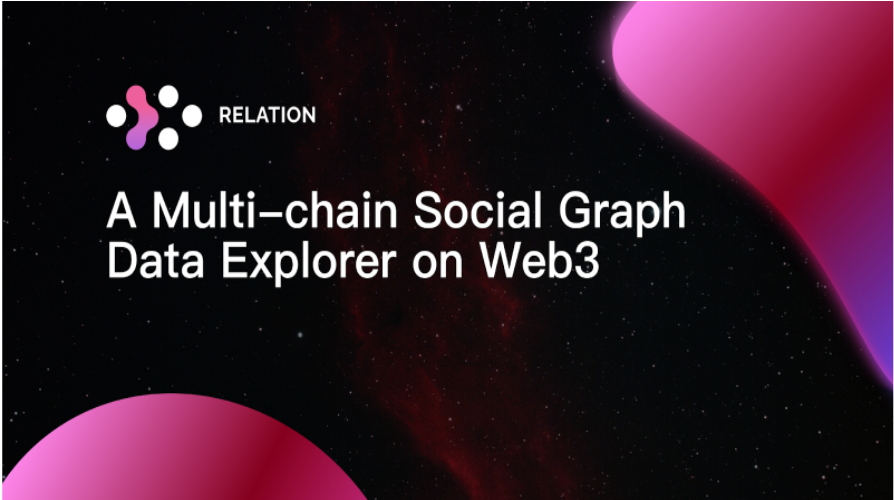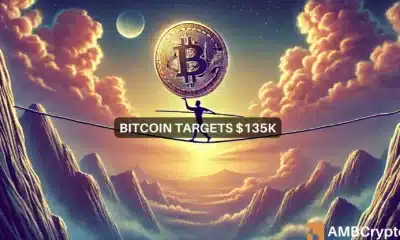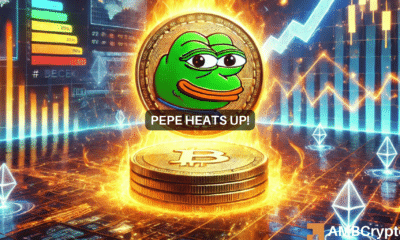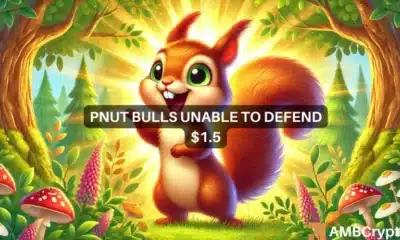Relation: The data explorer on Web 3 social graph

When we log in to social platforms such as Facebook and Twitter, recommendations will come out to push us to relevant acquaintances, celebrities, KOLs, topics of interest, mobile phone contacts syncs, etc., to facilitate personalized recommendations. Our activities on the platform form a social graph and become profit-generating data assets that are owned by the social giants.
The fact is, being evolved from the content-centric Web 1, these Web 2 applications are turning the read-only web into a new social space, thus building a social graph with significant commercial value and forming a sustainable web ecosystem through continuous data mining and analysis.
In the era of Web 3, decentralized social graphs are one of the secrets to getting products off the ground quickly, and ownership and utility are drifting to users. So the questions to ask are, how can we break the monopoly of the centralized social giants? How can applications capture the value of Web3 social graph data? Perhaps Relation, which is building a multi-chain decentralized social graph, provides some light.
Why social graphs are in demand for Web3 Dapps
Back to 2013, following the “Like” button launch, Meta (p.k.a Facebook) released Graph Search. This social graph search tool allowed users to search, discover and explore more relationships within their existing social networks in a new way that greatly enhanced the user experience. It was this product that not only gave Facebook its most significant step into the web search space but also led many similar platforms to copy it.
Indeed, the time-tested social graph has become the most valuable asset of Facebook, Twitter, and Instagram. This model of making relationships and social networks more transparent has been one of the core drivers of the boom in Web2 applications.
“If Web3 wants to have the same scale as the internet (4.66 billion users), it has now captured less than 1% of the market.” As Packy McCormick, founder of Not Boring Capital points out, the current size of Web3 users is far less than that of Web2, which currently has more than 106 million crypto users worldwide, according to a report published by Crypto.com in February this year. However, in the decentralized Web3 era, users have autonomous control and permanent ownership of all interactions. There is no limit to the combinations and compositions between applications, making the world more fluid and open. On web3, the relationship between the social graph and the user will no longer be as fixed and immobilized as it was in the previous Web2 applications. In other words, the Web3 social graph will be more promising.
In particular, as concepts such as metaverse, NFT, and GameFi accelerate their expansion into the mainstream, social giants including Meta, Youtube, Reddit, and Twitter are scrambling to get involved in Web3. Many crypto-native social platforms are snowballing in a series of funding rounds. It is conceivable that the social data generated by the user base of these platforms will be massive.
Despite the promising future of decentralized social graphs, current Web3 DApps challenge achieving large-scale growth like Web2 applications. On the one hand, the vast majority of current DApps are startups and do not have enough cost and effort to develop a set of social network smart contracts specifically, which makes the users of these applications stay in Discord and Telegram, and other third parties Social platforms only, other than staying in its webpages. On the other hand, due to the characteristics of decentralization and user anonymity, the social attributes of current projects such as DeFi, NFT, and GameFi are not vital.
These DApps do not have the rich ecological resources accumulated by Web2 applications and don’t have a large amount of centralized user data or app stores to rely on. It also leads to a lack of sufficient interaction between crypto users as a growth strategy. For example, Web2 companies can use emails, mobile numbers, etc., after releasing new features or relaunching. They can even re-acquire users through advertising on other platforms and launching Android or IOS app shops.
So, how can Web3 applications harness the potential of the social graph to achieve Web2-style user and business growth? Relation Labs is bringing in the products to address these issues. The Relation Link Tool Suite, an open-source easy-to-use solution built by Relation for blockchain DApps and community developers, and Relation One, a one-stop social application, are opening up more possibilities.
The Relation Link Tool Suite provides a growth engine for DApps.
There is no doubt that social mapping is one of the thorniest problems facing Web3 application development today. Relation Link Tool Suite offers a growth strategy and allows developers to create new social graphs without much cost and time.
The Tool Suite provides open-source Relation Graph accessing APIs, Relation Dashboard APIs, modular social functionality components, and multi-chain smart contract wallet solutions for DApps on each chain. In particular, developers or DApps with access to the Relation Graph will be able to create and manage their on-chain contacts through the built-in friend relationship protocol, thus increasing social attributes. At the same time, developers can also perform source code queries in the authorized data to obtain data relationship results.
Developers can also query Relation’s network-wide public data, including information on data controllers, Gas consumption, DataSpace creation numbers, log security monitoring, and more. In addition, Tool Suite allows multiple private keys to be stored and managed on Data Space for signing with just one user identity authority, simplifying the cumbersome operation of importing numerous private keys for users and enabling a multi-chain wallet solution with multiple different authentication and authorization through a unified authentication method.
In short, without the need to understand the underlying protocols and invest too much in cost, Relation provides developers with a development scaffold that is easy to develop, test, and deploy, enabling the efficient deployment of contracts and low code development. It can even be used to explore potential business opportunities. For example, DID digital identity can connect to the social relationship data mapping API to accurately capture valuable on-chain users and build a more valuable reputation system based on their social relationship data.
Why are we confident in unlocking a new paradigm for social DApps?
Relation Graph is the core engine behind Relation’s ability to break the current Web3 application growth dilemma and lower the barrier to deployment for developers.
Relation Graph is the first graph database written in Rust and deployed on WASM and is the underlying core engine of Relation. As the basis for the construction of Relation Social Graph, it provides graph storage, graph query, graph computation, graph analysis, and basic database technology capabilities. It will extend with technical modules for graph visualization and graph neural networks.
Specifically, Relation Graph supports organizing multi-dimensional data from Web3’s multi-chain ecosystem in an unstructured manner, facilitating data aggregation queries, correlation analysis, and deep mining, effectively enhancing the ability of Web3 applications to use data. In particular, it supports the SQL-like SPARQL query language, facilitating low-threshold and efficient data analysis for data engineers, who can write complex and sophisticated query codes to uncover the value of data from Relation Graph according to business needs. Relation Graph offers more than ten times efficiency improvement in N-degree relational queries than relational databases.
Revolutionizing the Web2 social graph, Relation One builds a one-stop social DApp.
Whenever we use a new Web2 social app, we must re-establish a new identity on it. Data and information from different platforms are not inter-transferable, and personal data will be lost once these centralized platforms fall. At the same time, with more and more user data in the hands of social media, users are forced to become data labor while privacy leaks and data misuse occur frequently.
Relation aims to break the centralized social graph dilemma with its one-stop social app Relation One, building a personalized visual Web3 social graph for users and returning the ownership and privacy of their data to their hands. They are also able to earn revenue from autonomous data contributions.
After adding addresses such as Metamask, Internet Identity, or Polkadot via Relation One, users can search to add friends by Relation ID, username, and on-chain address. Users will get friend recommendations from the system. Users can experience social functions such as personal Profile management, on-chain identity management, P2P chat, group chat, DAO, NFT avatar display, friend invitation, and private domain game rank.
Of course, Relation One will generate a Data Space for each user to store their unique private keys to protect user data privacy. At the same time, Relation is currently subsidizing a 1T Gas Fee per user to create a personal data space, enabling zero cost interaction. In addition, Relation One already supports MetaMask, Internet Identity, Polkadot, and other wallet applications for quick login to share social data between different blockchains. It will also be compatible with Solona, Near, Cosmos, Polygon, Ceramic, and Arweave in the future so that crypto users on any chain can have their social network on the way.
Compared to Web2 social apps, Relation One makes it easy to create a Relation ID, avoiding the hassle of creating a social graph every time you re-register for the app. And all Data Space ownership rights will be owned by users, and users can add, delete and modify their data, including contacts, smart contract wallets, DApp licenses, and ownership. It ensures the privacy of the user’s data storage.
In addition, Relation One will also synchronize all of the user’s social networks across different apps, allowing them to meet like-minded people in various areas of interest, on other platforms, etc. Even if the relevant platform is closed, they will not have to worry about losing the content they have created or their friends. For DApps, the Relation One module provides a more intuitive understanding of users’ interests and allows them to reach out to relevant groups more precisely. For example, the GameFi project can further increase the stickiness of its community and expand its user base by integrating the chat, friend invitation, and Rank PK functions in Relation One.
To change the past situation that social giants are unilaterally exploiting data value, Relation One plans to introduce an economic model and data-to-earn scheme to incentivize users’ willingness to provide data value to applications or relevant stakeholders through open licensing.
To accelerate the development of the Relation ecosystem, Relation currently offers several eco-incentive programs, such as Grant support for media, community, or individual KOLs that contribute to the Relation brand; early integration incentives, and Relation’s community resources for eco-projects that provide feedback on Tool Suite products and suggest optimizations. Relation also offers developer courses to help developers quickly use the Tool Suite to enrich their business scenarios.
Amid the Web3 momentum, projects like Relation not only safeguard user data sovereignty and data-assets value, but also allow many applications such as DeFi, NFT, and games to have a more rich set of functions and user growth in a cost-efficient way. Leaving DApps and developers more time and energy for innovation and development, they can better utilize Web3’s composability.
For more information about Relation Labs, reach out via:
Twitter: https://twitter.com/relationlabs
Disclaimer: This is a paid post and should not be treated as news/advice.






